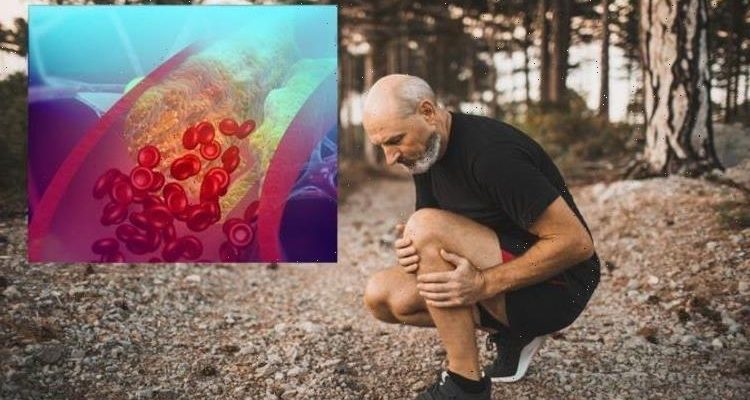High cholesterol: Nutritionist reveals top prevention tips
We use your sign-up to provide content in ways you’ve consented to and to improve our understanding of you. This may include adverts from us and 3rd parties based on our understanding. You can unsubscribe at any time. More info
The NHS defines PAD as “a common condition where a build-up of fatty deposits in the arteries restricts blood supply to leg muscles”.
The fatty deposits are made up of cholesterol and other waste from your body.
Like all conditions, there are symptoms, and as this condition relates to mainly to your legs, this is where most of the symptoms are found.
If too much bad cholesterol builds up, it can result in some serious health complications, including Peripheral arterial disease, or PAD, for short.

For those that do, the symptoms can either be very painful or embarrassing.
Hair loss in your legs and feet is one of the symptoms to look out for if you’re concerned.
Furthermore, you should be wary if you experience any numbness or weakness in your legs or notice the muscles in your legs wasting (shrinking).
Painful symptoms include ulcers, that subsequently don’t heal, opening up on your legs and feet.
An unusual symptom of PAD that applies to men is erectile dysfunction.
Although if you have this condition, it does not necessarily mean that you have peripheral arterial disease.
Furthermore, you should consider the possibility if you notice the colour of your skin changing e.g., if it is turning blue or pale.
Brittle or slow-growing toenails are also a symptom of PAD.
These symptoms will develop over time.

If these symptoms worsen, it could be a sign of something serious that requires treatment.
According to the NHS, you should see a GP if you, ‘experience recurring leg pain when exercising’.
As mentioned, one of the causes of PAD is the build up cholesterol, but the NHS also lists risk factors that can increase your likelihood of developing the condition.
These include the most significant factor, smoking.

If you have either type 1 or type 2 diabetes, you are also at risk.
Hypertension (high blood pressure) and high cholesterol are factors that increase your risk of developing PAD.
As you age your likelihood of developing the condition increases.
If you have any concerns on PAD or any other medical matter, always consult with your GP.
Source: Read Full Article
